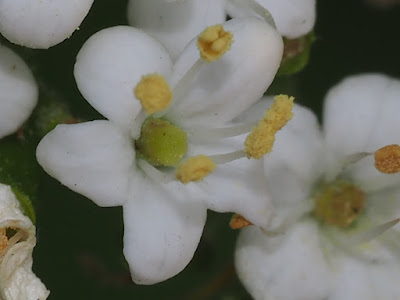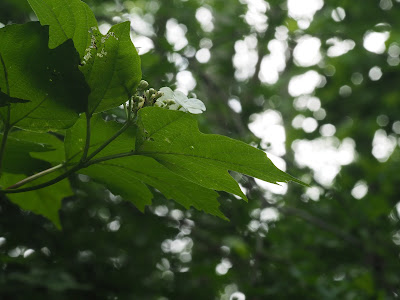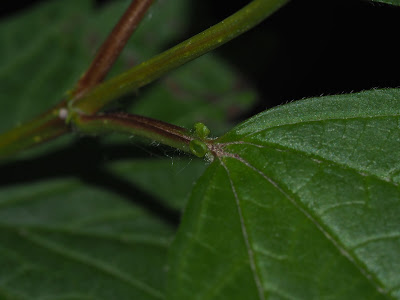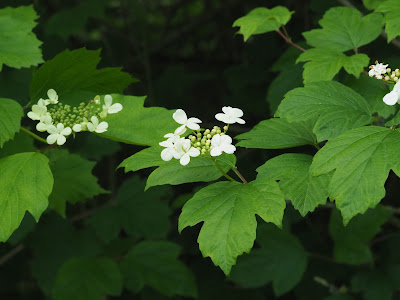Common name: Wayfaring-tree
Scientific name: Viburnum latana 綿毛莢蒾
Genus: Viburnum 莢蒾屬*
Family: Adoxaceae 五福花科, moschatel family
Remarks*: Viburnum was previously included in the Caprifoliaceae 忍冬科, the honeysuckle family. Based on molecular phylogeny, it is now placed in Adoxaceae 五福花科, moschatel family.
Origin: native
Date: 26th April & (13th May)
A deciduous shrub, can reach up to 3 m.
Flowering shoot.
The inflorescence.
Opposite leaves.
Leaf blade 5 - 10 cm, regularly toothed.
Leaf densely hairy beneath.

The underside of the leaf showing the hairs.
Twig is pubescent. Photo enlarged below.

The hairs of the twig.
The branching pattern of the inflorescence. (the flat-topped cyme)
Photo enlarged below to see the lateral view of the flowers.

The sepals (5 very short green lobes)
Another photo of the lateral view of flowers.

The bracteole and sepals of the flower. Note the bottom of this flower swollen a little bit. It seems it maybe fertilized and the ovary is changing into fruit.

The
star-shaped white hairs on the flower stalk.
Photo enlarged below to see the details of the flower.
5 petals, with their tips reflexing. 5 stamens, alternating with the petals. 1 green style.
Another photo of other flowers.
---------------------------------------------------------------------------------
(Photos below were taken on 13th May)
Flowers had been dropped and some of them are fruiting now.
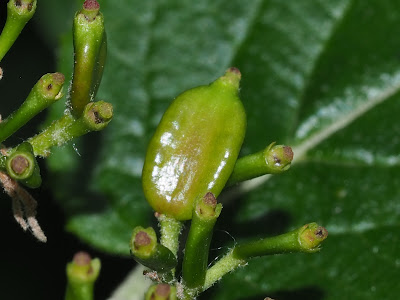
Fruit is forming. It is very laterally compressed at this stage.


















